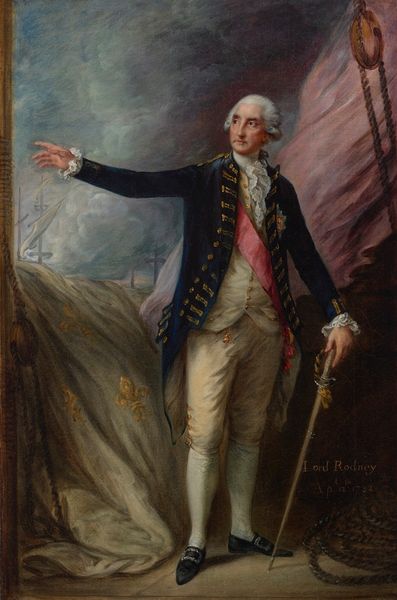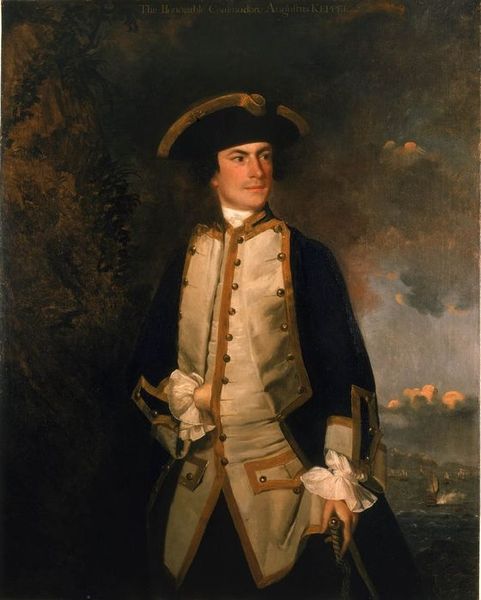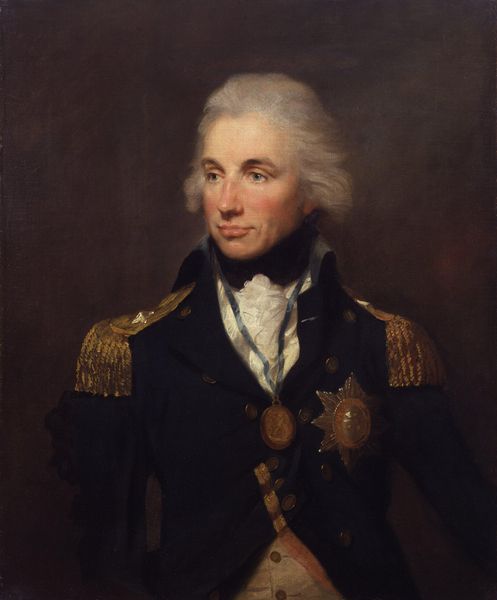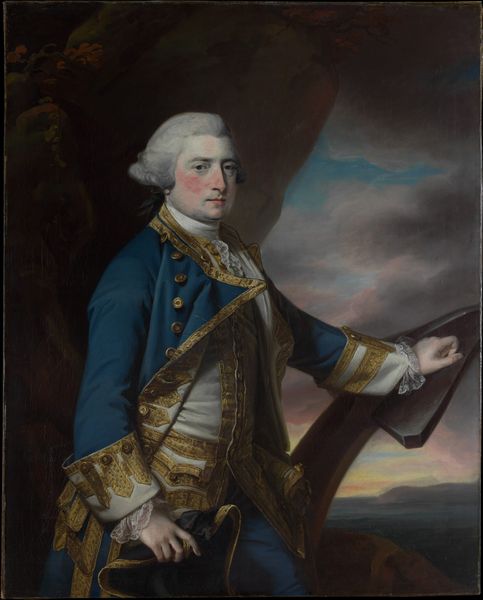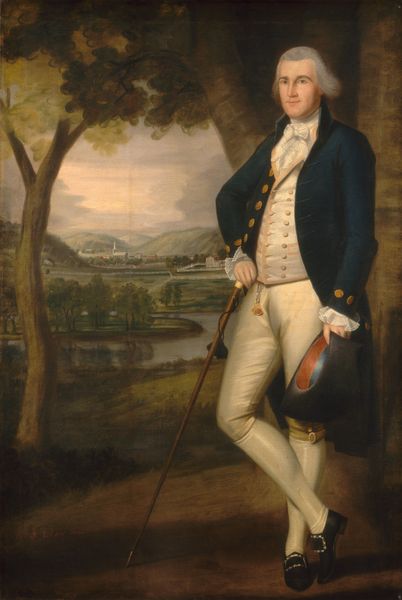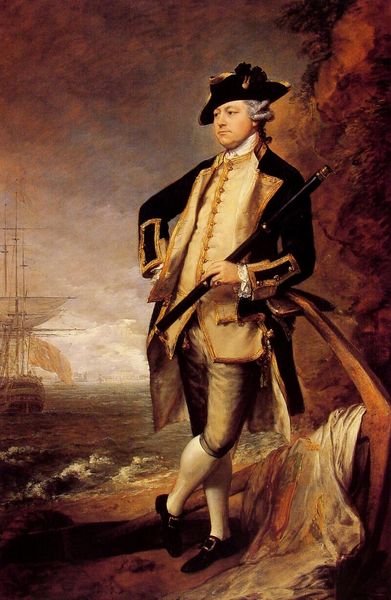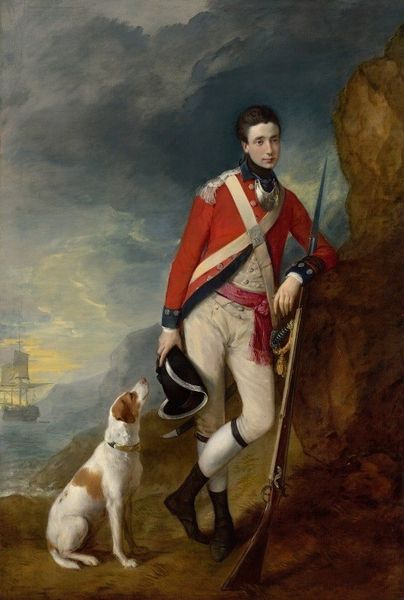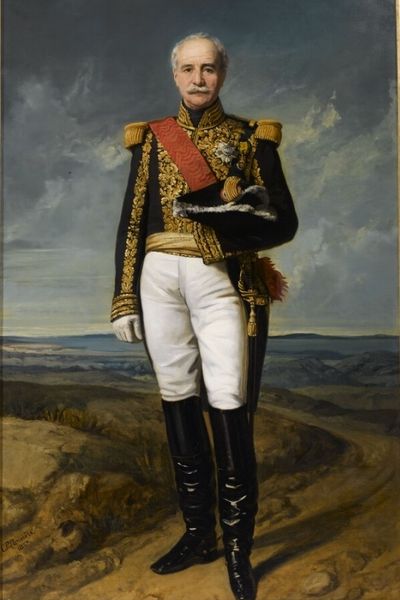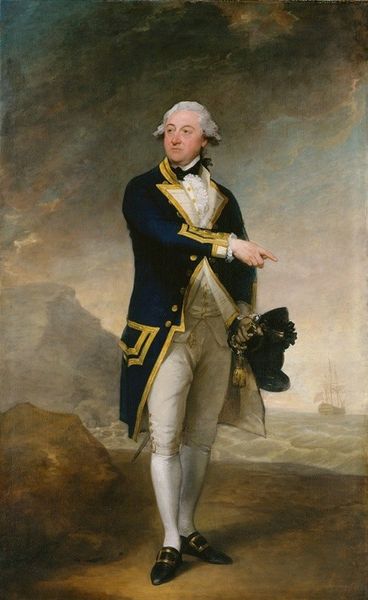
photography
#
woman
#
war
#
possibly oil pastel
#
photography
#
portrait reference
#
portrait head and shoulder
#
underpainting
#
animal portrait
#
animal drawing portrait
#
portrait drawing
#
surrealist
#
lady
#
portrait art
#
fine art portrait
Copyright: Public domain
Editor: So, here we have John Hoppner's "Rear-Admiral Sir Horatio Nelson," painted in 1800. It strikes me as quite heroic, with Nelson posed against the backdrop of a naval battle. What aspects stand out to you? Curator: It's fascinating how Hoppner constructs Nelson's image. Look at the details – the medals, the uniform, even the stormy scene. How do these elements work to create a specific narrative around Nelson, particularly in relation to British national identity at the time? Editor: Well, all of that finery clearly communicates power and prestige. The naval battle in the background solidifies his reputation as a war hero. But is it all just glorification, or does it communicate anything deeper? Curator: Consider the context. This was painted during the Napoleonic Wars, a period of intense national anxiety. Portraits like this weren't just about individual likeness; they were strategic tools, projecting an image of strength and leadership to bolster public morale and unify the nation against a common enemy. Do you think the public believed the story? Editor: Maybe that's the point; maybe people needed to see him that way regardless of who he actually was, almost as an idea of leadership that motivated a country. Now I'm wondering, were there other artworks made at the time of a similar nature? Curator: Absolutely! This portrait fits into a larger trend of heroic representations that reinforced Britain's imperial ambitions. Think of the landscapes by Turner or history paintings that celebrated British victories. These images helped solidify a sense of national identity and justify expansionist policies. Editor: It’s like propaganda elevated to fine art. It definitely shifts my perspective to consider the bigger social context. Curator: Exactly. It's about understanding the social and political forces that shaped not only the creation of the artwork but also its reception. How do you think museums today can play a role in unpacking these layers? Editor: That's true! Looking at art as more than just a pretty thing hanging on a wall, as evidence of cultural narrative; this reframes the image. Thanks!
Comments
No comments
Be the first to comment and join the conversation on the ultimate creative platform.

